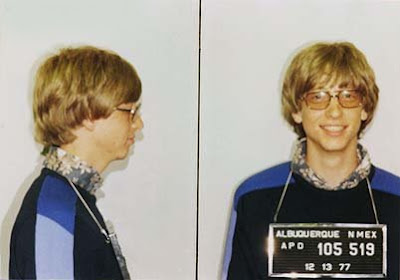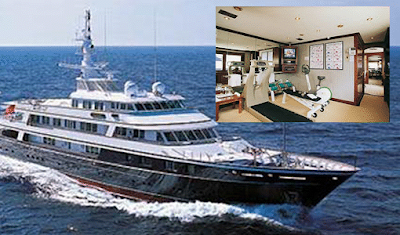Wednesday, February 3, 2010
Sports
Sport is commonly defined as an organized, competitive and skillful physical activity requiring commitment and fair play. Some view sports as differing from games based on the fact that there are usually higher levels of organization and profit (not always monetary) involved in sports. Accurate records are kept and updated for most sports at the highest levels, while failures and accomplishments are widely announced in sport news.
Sports that are subjectively judged are distinct from other judged activities such as beauty pageants and bodybuilding shows, because in the former the activity performed is the primary focus of evaluation, rather than the physical attributes of the contestant as in the latter (although "presentation" or "presence" may also be judged in both activities).
Sports are most often played just for fun or for the simple fact that people need exercise to stay in good physical condition.
Although they do not always succeed, sports participants are expected to display good sportsmanship, standards of conduct such as being respectful of opponents and officials, and congratulating the winner when losing.
Sportsmanship is an attitude that strives for fair play, courtesy toward teammates and opponents, ethical behaviour and integrity, and grace in victory or defeat.
Sportsmanship
Sportsmanship expresses an aspiration or ethos that the activity will be enjoyed for its own sake. The well-known sentiment by sports journalist Grantland Rice, that it's “not that you won or lost but how you played the game," and the Modern Olympic creed expressed by its founder Pierre de Coubertin: "The most important thing . . . is not winning but taking part" are typical expressions of this sentiment.
Violence in sports involves crossing the line between fair competition and intentional aggressive violence. Athletes, coaches, fans, and parents sometimes unleash violent behaviour on people or property, in misguided shows of loyalty, dominance, anger, or celebration. Rioting or hooliganism are common and ongoing problems at national and international sporting contests.
Professionalism
The entertainment aspect of sports, together with the spread of mass media and increased leisure time, has led to professionalism in sports. This has resulted in some conflict, where the paycheck can be seen as more important than recreational aspects, or where the sports are changed simply to make them more profitable and popular, thereby losing certain valued traditions.
The entertainment aspect also means that sportsmen and women are often elevated to celebrity status.
Politics
At times, sports and politics can have a large amount of influence on each other.
When apartheid was the official policy in South Africa, many sports people, particularly in rugby union, adopted the conscientious approach that they should not appear in competitive sports there. Some feel this was an effective contribution to the eventual demolition of the policy of apartheid, others feel that it may have prolonged and reinforced its worst effects.[7]
The 1936 Summer Olympics held in Berlin was an illustration, perhaps best recognised in retrospect, where an ideology was developing which used the event to strengthen its spread through propaganda.
In the history of Ireland, Gaelic sports were connected with cultural nationalism. Until the mid 20th century a person could have been banned from playing Gaelic football, hurling, or other sports administered by the Gaelic Athletic Association (GAA) if she/he played or supported soccer, or other games seen to be of British origin. Until recently the GAA continued to ban the playing of soccer and rugby union at Gaelic venues. This ban is still enforced, but has been modified to allow football and rugby be played in Croke Park while
Lansdowne Road is being redeveloped. Until recently, under Rule 21, the GAA also banned members of the British security forces and members of the RUC from playing Gaelic games, but the advent of the Good Friday Agreement in 1998 led to the eventual removal of the ban.
Nationalism is often evident in the pursuit of sports, or in its reporting: people compete in national teams, or commentators and audiences can adopt a partisan view. On occasion, such tensions can lead to violent confrontation among players or spectators within and beyond the sporting venue. These trends are seen by many as contrary to the fundamental ethos of sports being carried on for its own sake and for the enjoyment of its participants.
Physical art
Sports have many affinities with art. Ice skating and Tai chi, and Dancesport for example, are sports that come close to artistic spectacles in themselves. Similarly, there are other activities that have elements of sport and art in their execution, such as artistic gymnastics, Bodybuilding, Parkour, performance art, Yoga, bossaball, dressage, culinary arts, etc. Perhaps the best example is Bull-fighting, which in Spain is reported in the arts pages of newspapers. The fact that art is so close to sports in some situations is probably related to the nature of sports. The definition of "sports" above put forward the idea of an activity pursued not just for the usual purposes, for example, running not simply to get places, but running for its own sake, running as well as we can.
This is similar to a common view of aesthetic value, which is seen as something over and above the strictly functional value coming from an object's normal use. So an aesthetically pleasing car is one which doesn't just get from A to B, but which impresses us with its grace, poise, and charisma.
In the same way, a sporting performance such as jumping doesn't just impress us as being an effective way to avoid obstacles or to get across streams. It impresses us because of the ability, skill, and style which is shown.
Art and sports were probably more clearly linked at the time of Ancient Greece, when gymnastics and calisthenics invoked admiration and aesthetic appreciation for the physical build, prowess and 'arete' displayed by participants. The modern term 'art' as skill, is related to this ancient Greek term 'arete'. The closeness of art and sport in these times was revealed by the nature of the Olympic Games which, as we have seen, were celebrations of both sporting and artistic achievements, poetry, sculpture and architecture.
Technology
Technology has an important role in sports, whether applied to an athlete's health, the athlete's technique, or equipment's characteristics.
Equipment As sports have grown more competitive, the need for better equipment has arose. Golf clubs, football helmets, baseball bats, soccer balls, hockey skates, and other equipment have all seen considerable changes when new technologies have been applied.
Health Ranging from nutrition to the treatment of injuries, as the knowledge of the human body has deepened over time, an athlete's potential has been increased. Athletes are now able to play to an older age, recover more quickly from injuries, and train more effectively than previous generations of athletes.
Instruction Advancing technology created new opportunities for research into sports. It is now possible to analyse aspects of sports that were previously out of the reach of comprehension. Being able to use motion capture to capture an athlete's movement, or advanced computer simulations to model physical scenarios has greatly increased an athlete's ability to understand what they are doing and how they can improve themselves.
Terminology
In British English, sporting activities are commonly denoted by the mass noun "sport". In American English, "sports" is more used. In all English dialects, "sports" is the term used for more than one specific sport. For example, "football and swimming are my favourite sports", would sound natural to all English speakers, whereas "I enjoy sport" would sound less natural than "I enjoy sports" to North Americans.
The term "sport" is sometimes extended to encompass all competitive activities, regardless of the level of physical activity. Both games of skill and motor sport exhibit many of the characteristics of physical sports, such as skill, sportsmanship, and at the highest levels, even professional sponsorship associated with physical sports. Air sports, billiards, bridge, chess, motorcycle racing, and powerboating are all recognized as sports by the International Olympic Committee with their world governing bodies represented in the Association of the IOC Recognised International Sports Federations.
Spectator sport
As well as being a form of recreation for the participants, much sport is played in front of an audience. Most professional sport is played in a 'theatre' of some kind; be it a stadium, arena, golf course, race track, or the open road, with provision for the (often paying) public.
Australian Rules Football
Large television or radio audiences are also commonly attracted, with rival broadcasters bidding large amounts of money for the 'rights' to show certain fixtures. The football World Cup attracts a global television audience of hundreds of millions; the 2006 Final alone attracted an estimated worldwide audience of well over 700 million. In the United States, the championship game of the NFL, the Super Bowl, has become one of the most watched television broadcasts of the year. Super Bowl Sunday is a de facto national holiday in America; the viewership being so great that in 2007 advertising space was reported as being sold at $2.6m for a 30 second slot.
Philippines Light Rail Transit Public Transportation
The Manila Light Rail Transit System (Filipino: Sistema ng Magaan na Riles Panlulan ng Maynila),[citation needed] popularly known as the LRT, is a metropolitan rail system serving the Metro Manila area in the Philippines. Its twenty-nine stations over 28.8 kilometers (17.9 mi) of mostly elevated track form two lines. LRT Line 1, also called the Yellow Line, opened in 1984 and travels a north–south route. LRT Line 2, the Purple Line, was completed in 2004 and runs east–west.
The LRT is operated by the Light Rail Transit Authority (LRTA), a government-owned and controlled corporation under the authority of the Department of Transportation and Communications (DOTC). Along with the Manila Metro Rail Transit System (MRT, also called the Blue Line), and the Philippine National Railways (PNR), the LRT is part of Metro Manila's rail transportation infrastructure known as the Strong Republic Transit System (SRTS)
Stations
 The People Power Revolution was a series of nonviolent and prayerful mass street demonstrations in the Philippines that occurred in 1986. It was the inspiration for subsequent non-violent demonstrations around the world including those that ended the communist dictatorships of Eastern Europe.
The People Power Revolution was a series of nonviolent and prayerful mass street demonstrations in the Philippines that occurred in 1986. It was the inspiration for subsequent non-violent demonstrations around the world including those that ended the communist dictatorships of Eastern Europe.

 In 1990, it was voted by the BMW Tropical Beach Handbook as one of the best beaches in the world
In 1990, it was voted by the BMW Tropical Beach Handbook as one of the best beaches in the world
 Barasoain Church (also known as Our Lady of Mt. Carmel Parish) is a Roman Catholic church built in 1630 in Malolos City, Bulacan.
Barasoain Church (also known as Our Lady of Mt. Carmel Parish) is a Roman Catholic church built in 1630 in Malolos City, Bulacan.
 Laguna de Bay (Filipino: Lawa ng Bay; English: Laguna de Bay is the largest lake in the Philippines and the third largest freshwater lake in Southeast Asia
Laguna de Bay (Filipino: Lawa ng Bay; English: Laguna de Bay is the largest lake in the Philippines and the third largest freshwater lake in Southeast Asia
 Malacañan Palace, is the official residence of the President of the Philippines.
Malacañan Palace, is the official residence of the President of the Philippines.






















 >
>




















































No comments:
Post a Comment